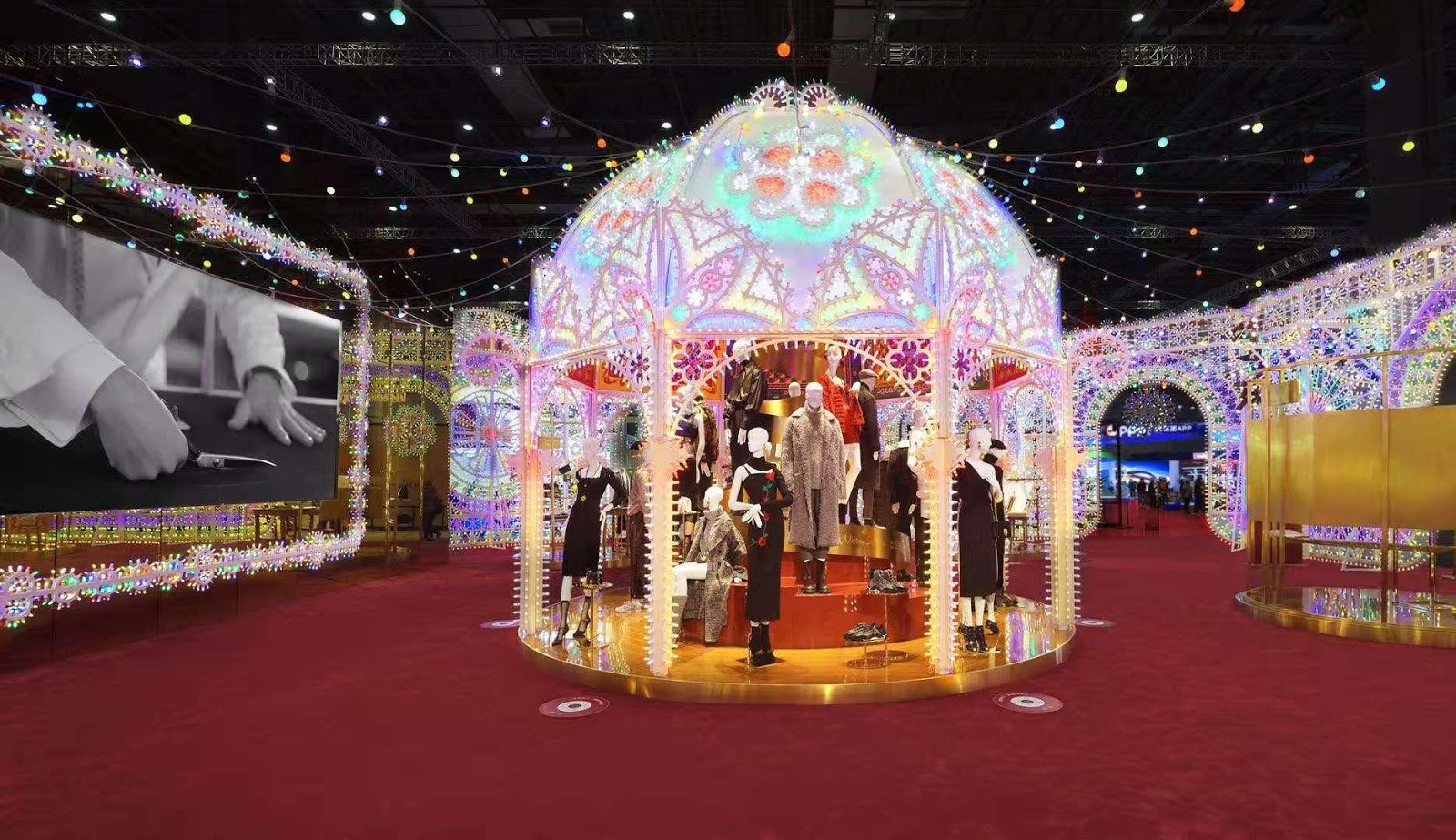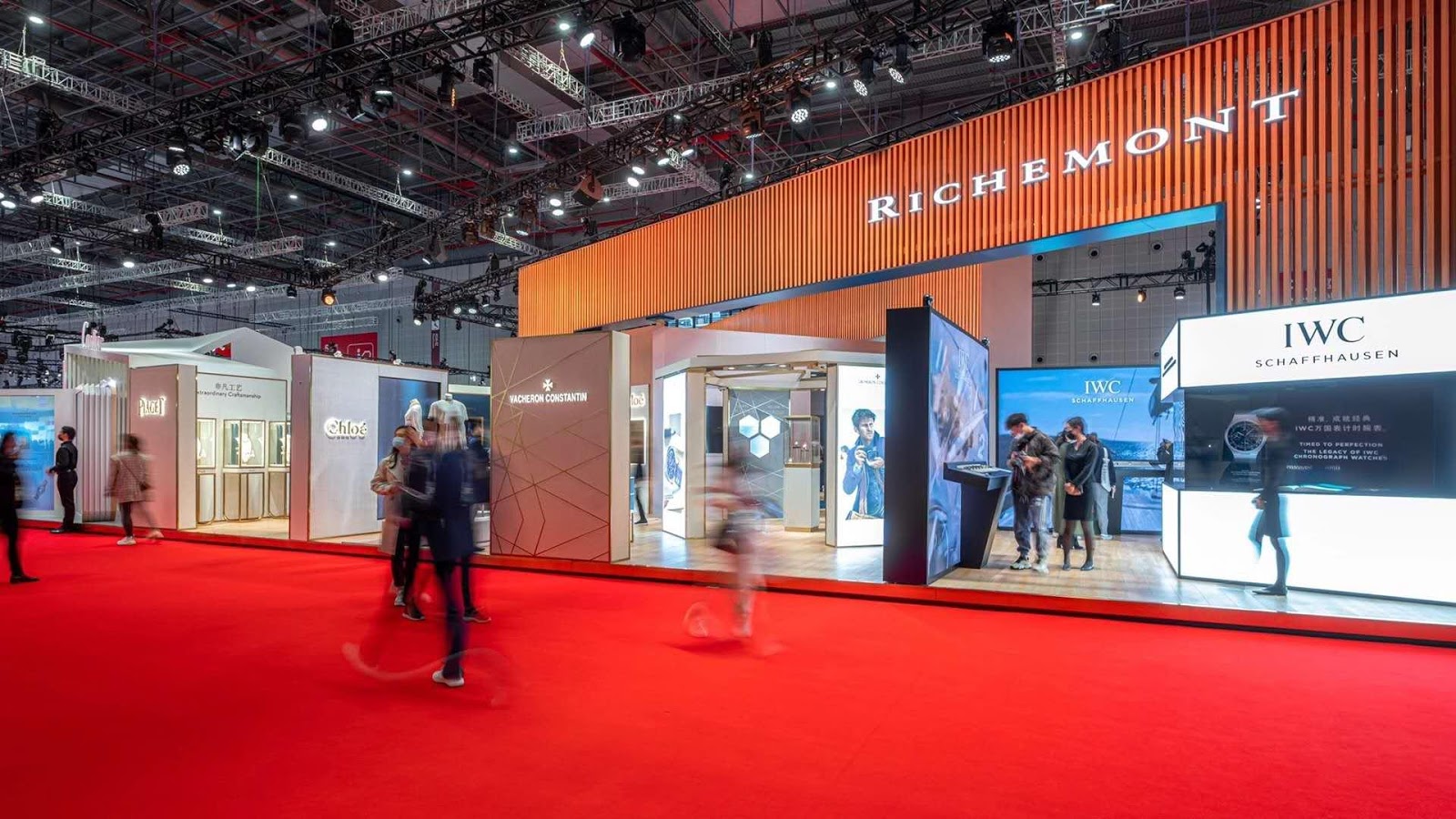
The third edition of the China International Import Expo (CIIE) made waves as the world’s largest offline exhibition this year. How did international fashion and beauty brands leverage this opportunity to increase their visibility in the market?
A few kilometres away from Shanghai’s Hongqiao airport, the clover-leaf shaped National Convention and Exhibition Center (NCEC) welcomed around 400,000 guests from China and around the world for six days earlier in November. These people had the same destination: The China International Import Expo, which spanned over 360,000 square metres within the exhibition centre.
The past three editions of the import-themed international fair have been held in Shanghai, and its importance is evident from the city-wide traffic controls and changes to the nation’s regular work schedule implemented during the exhibition period. This year, despite the travel restrictions imposed due to COVID-19, China still chose to open its doors and welcomed guests from over 64 countries and regions, and around 2,800 companies – making CIIE the world’s largest offline exhibition this year.
The success of CIIE has partly been attributed to the Chinese government’s effective control of the pandemic, as well as increased interest in the market from international brands following its economic rebound. China’s economy began to recover from as early as the second quarter this year, with GDP growing 3.2 per cent year-on-year. As reported by the Wall Street Journal, China might very well be the only major global economy to experience growth in 2020. Overall retail sales in September also grew by 2.4 per cent from a year earlier – the first monthly growth observed this year.
As China’s share of the global economy expands, CIIE is gaining traction as a stage for international companies to demonstrate their connection to the Chinese market and its consumers. Due to the strong business-to-business nature of the fair (and the fact that it was not open to the public due to COVID-19) exhibitors did not merely showcase products, but seized the opportunity to redefine themselves and send out messages at the industry level as well.
Western fashion and beauty companies banking on the growth of the Chinese market were no exception, filling the dedicated consumer goods section in CIIE. This section typically hosts conglomerates from various segments including beauty, fashion, jewellery and sportswear.
The Ties of Diplomacy
Notably, American multi-brand luxury holding company Tapestry – with its three brands Coach, Kate Spade and Stuart Weitzman – signed a long-term cooperation memorandum with CIIE in May this year, confirming Tapestry’s attendance for the next three years, despite the ongoing trade friction between the US and China. It marks the first time Tapestry has forged a full partnership with a world-class trade show organisation.
Diplomatic ties can sometimes lead to opportunities for brands as well. This year’s fair coincides with the 50th anniversary of the establishment of diplomatic relations between China and Italy, as well as Italy’s participation in the Belt and Road Initiative (BRI). Italian fashion powerhouse Dolce & Gabbana took this opportunity to reintroduce itself to Chinese audiences following its 2018 chopsticks scandal that resulted in a nationwide boycott of the label. The brand threw the spotlight on Italian craftsmanship and even paid tribute to the longstanding friendship between Italy and China with a limited edition “Silk Road” scarf collection, featured in the exhibition’s Silk Road section.
Regardless of the effectiveness of Dolce & Gabbana’s communication strategy in the market, the fair, at the very least, provided them with a platform to communicate with audiences. Beyond that, brands are also turning to CIIE to explore other industry trends.

A Focus on Sustainability
At the 75th United Nations General Assembly, Chinese President Xi Jinping pledged to have CO2 emissions peak before 2030 in China, and achieve carbon neutrality by 2060. There is no doubt that environmental and sustainability issues are pivotal at this point, and this theme is observed across many brand exhibitions in CIIE.
U.S. fast moving consumer goods company P&G announced its “Ambition 2030” sustainability goals at this year’s expo. It spans brands, global supply chains, communities and employees, and seeks to achieve sustainable development at scale. P&G Greater China President, Matthew S. Price says, “Our world is facing three pressing challenges: Climate change, waste and water resources. The nature of P&G’s business means that we can help meet environmental challenges and achieve positive results on a large scale.” In addition, French beauty giant L’Oréal unveiled an immersive space at the fair titled “Good Consumption”, which combined ideas of beauty, technology, and responsibility to explore the social responsibilities of today’s companies.
New Technologies
One of the most eye-catching platforms at the event was presented by newcomer Uniqlo. Its 1,500 sqm space was named “Museum of Tomorrow” and featured walls of Uniqlo’s wide range of products in all colours of the rainbow. The largest setup in the consumer goods section, Uniqlo showcased its innovations through the “LifeWear” concept, highlighting its patented fabric technologies including HEATTECH, AIRism, BLOCKTECH and the all-new WHOLEGARMENT seamless 3D-knitting technology.
Swiss luxury group Richemont also participated for the first time, bringing its brands such as Chloé, Vacheron Constantin and Piaget to the exhibition. Vacheron Constantin introduced its digital certification of authenticity powered by Blockchain technology. This service was initially only offered to the Les Collectionneurs collection, but will be extended to all Vacheron Constantin timepieces from end-2021 onwards.

While it may be difficult for brands to assess the concrete returns of investment on an event like CIIE, based on the exposure generated by CIIE, the expo deserves to be regarded perceived by brands as an important marketing window in China, and a chance to communicate at all levels in this market. And as the largest consumer market in the world, China is not a market where expense should be spared.
Cover Image: VCG

